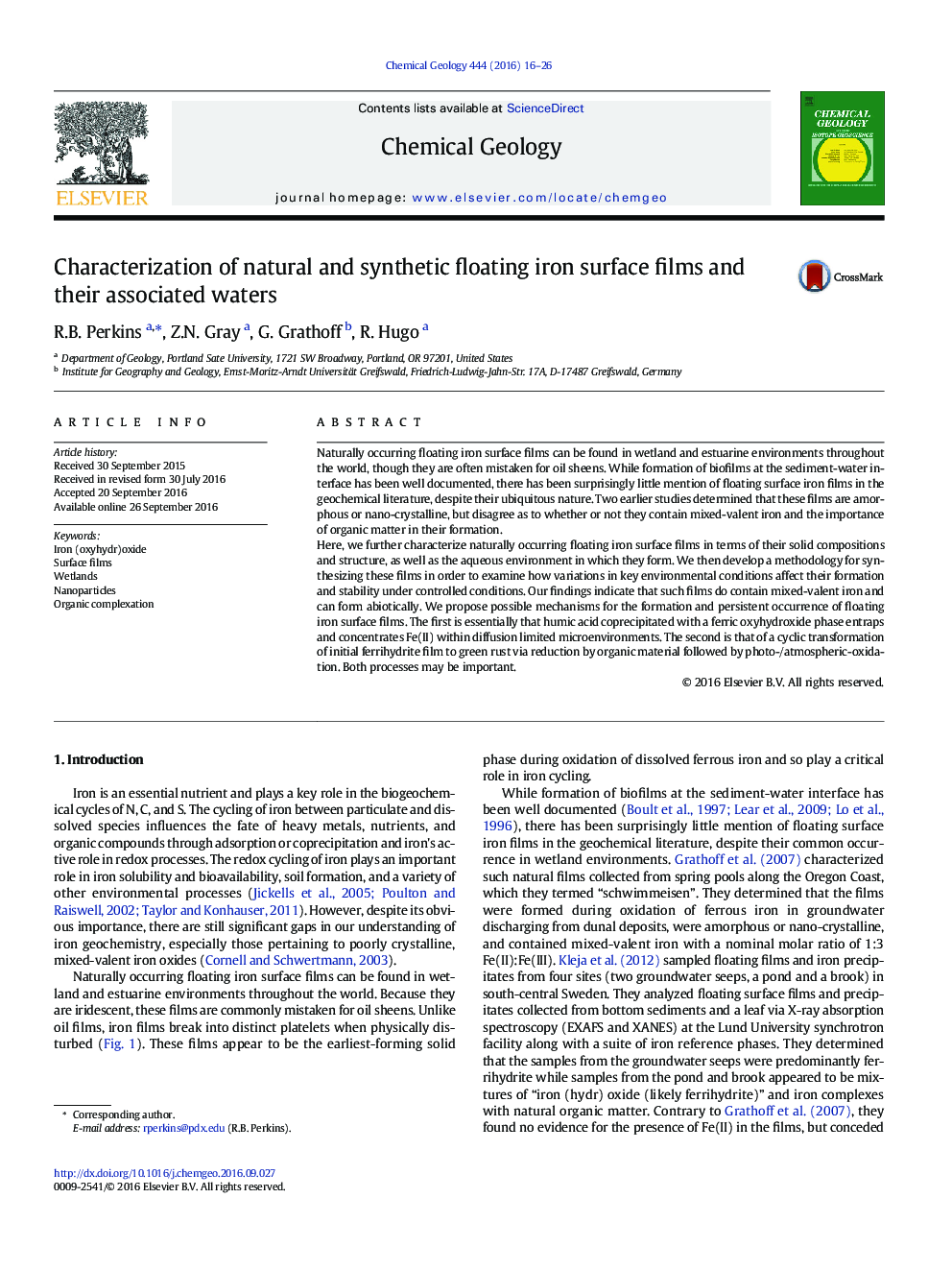| Article ID | Journal | Published Year | Pages | File Type |
|---|---|---|---|---|
| 4698166 | Chemical Geology | 2016 | 11 Pages |
Naturally occurring floating iron surface films can be found in wetland and estuarine environments throughout the world, though they are often mistaken for oil sheens. While formation of biofilms at the sediment-water interface has been well documented, there has been surprisingly little mention of floating surface iron films in the geochemical literature, despite their ubiquitous nature. Two earlier studies determined that these films are amorphous or nano-crystalline, but disagree as to whether or not they contain mixed-valent iron and the importance of organic matter in their formation.Here, we further characterize naturally occurring floating iron surface films in terms of their solid compositions and structure, as well as the aqueous environment in which they form. We then develop a methodology for synthesizing these films in order to examine how variations in key environmental conditions affect their formation and stability under controlled conditions. Our findings indicate that such films do contain mixed-valent iron and can form abiotically. We propose possible mechanisms for the formation and persistent occurrence of floating iron surface films. The first is essentially that humic acid coprecipitated with a ferric oxyhydroxide phase entraps and concentrates Fe(II) within diffusion limited microenvironments. The second is that of a cyclic transformation of initial ferrihydrite film to green rust via reduction by organic material followed by photo-/atmospheric-oxidation. Both processes may be important.
